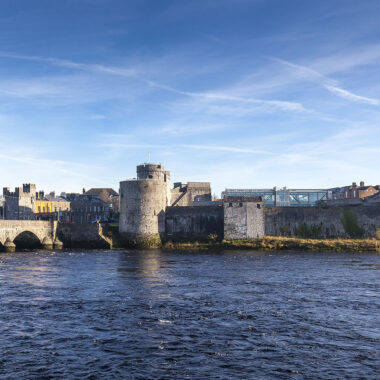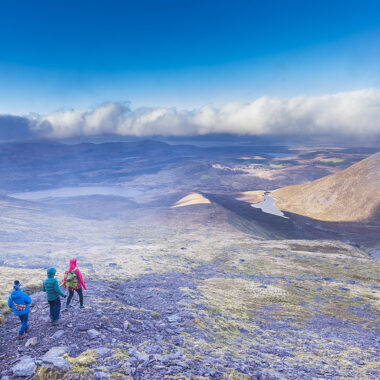Get Directions
It was an easy day trip to Ireland’s second largest city of Cork from our base in the sleepy village of Gneevgullia in County Kerry, was great to see so many young people traipsing about, the handful of universities in town making for quite an eclectic and vibrant city. Central Cork was crisscrossed with mostly pedestrian-only streets, many of them decorated extravagantly with Christmas fare, with buskers along the bulk of the streets adding to the festive spirit. Some of the street art was very impressive, particularly the building-sized murals scattered about central Cork. Strolling around I was again astonished at how pricey it’s been in Ireland compared to all the other European countries we’d visited. I’d say it probably ranks second behind Switzerland. Everything from accommodation to fuel to beer. I can understand Switzerland being expensive: it’s a stunningly beautiful part of the world, is incredibly safe and ranks third in a leaderboard of the world’s happiest countries. I guess Ireland has Guinness, as well as in-shower electric water heaters (just wait until you experience one of those little puppies…).























Cork’s English Market was a feast for the senses, some wonderful meats and seafood on offer throughout. There were also quite a few solid eats from which to choose, although unfortunately nowhere to sit to consume them. If I lived anywhere near Cork I’d be driving into the English Market to do my shopping at every opportunity.












We delved into a bit of local history in Cork after strolling past the stunning Saint Fin Barre’s Cathedral. Our tour through Elizabeth Fort educated us all on the way in which Irish women and children convicts were shipped off to Tasmania when Australia was originally settled by Europeans, and continued the theme from our tour of Saint George’s Hall in Liverpool. The views of central Cork from the ramparts of the fort were quite impressive, especially with the full rainbow floating above the city when we were there (unfortunately even in Ireland there were no leprechauns at the ends of the rainbow…). The plaques on the wall in the fort’s museum were very interesting, especially the ones detailing the fates of the crew and convicts of the sailing ship Neva: it wrecked off the coast of Tasmania, and a handful of survivors swum to the coast of remote King Island (a spot Lisa and I visited during the first chapter of Our Walkabout). The kids enjoyed reading the fort’s educational pamphlet as we toured, although Max was not too excited about the heads on stakes partway through the tour (photo below)! We also took a stroll up to Saint Anne’s Church for a tourist rite of passage: ringing Shandon Bells. Unfortunately, however, the enlightened folk at the Church of Ireland had taken the view that ringing the centuries-old bells was going to be a major spreader of COVID so had suspended the practice for eternity (on in their words, “until COVID is over”).




















A beautiful market, stunning Saint Fin Barre’s Cathedral and very creative community murals with temptation for a chicken burger and tarts.
Some fascinating history with link to Australia and a joyful revisit to King Island.